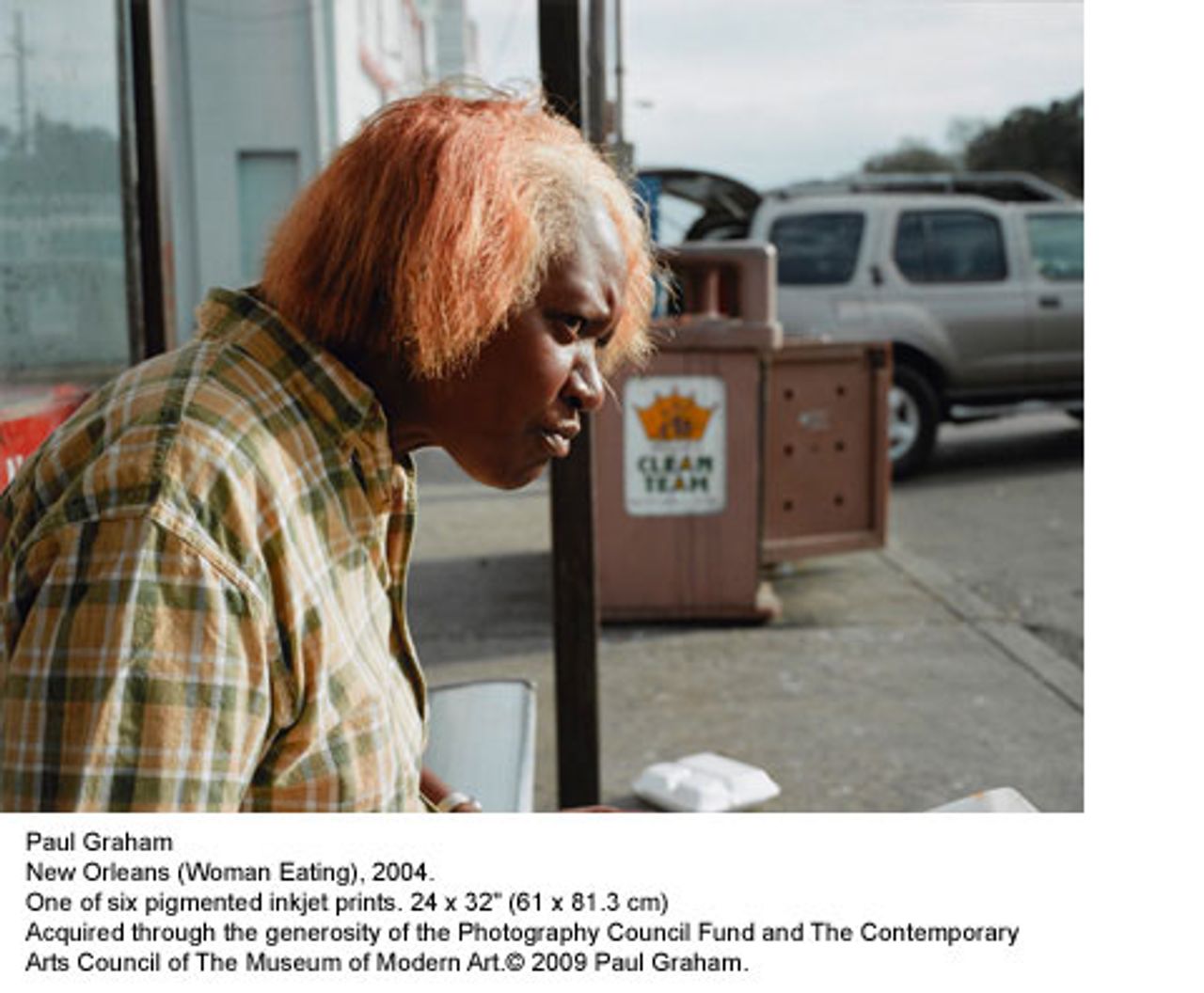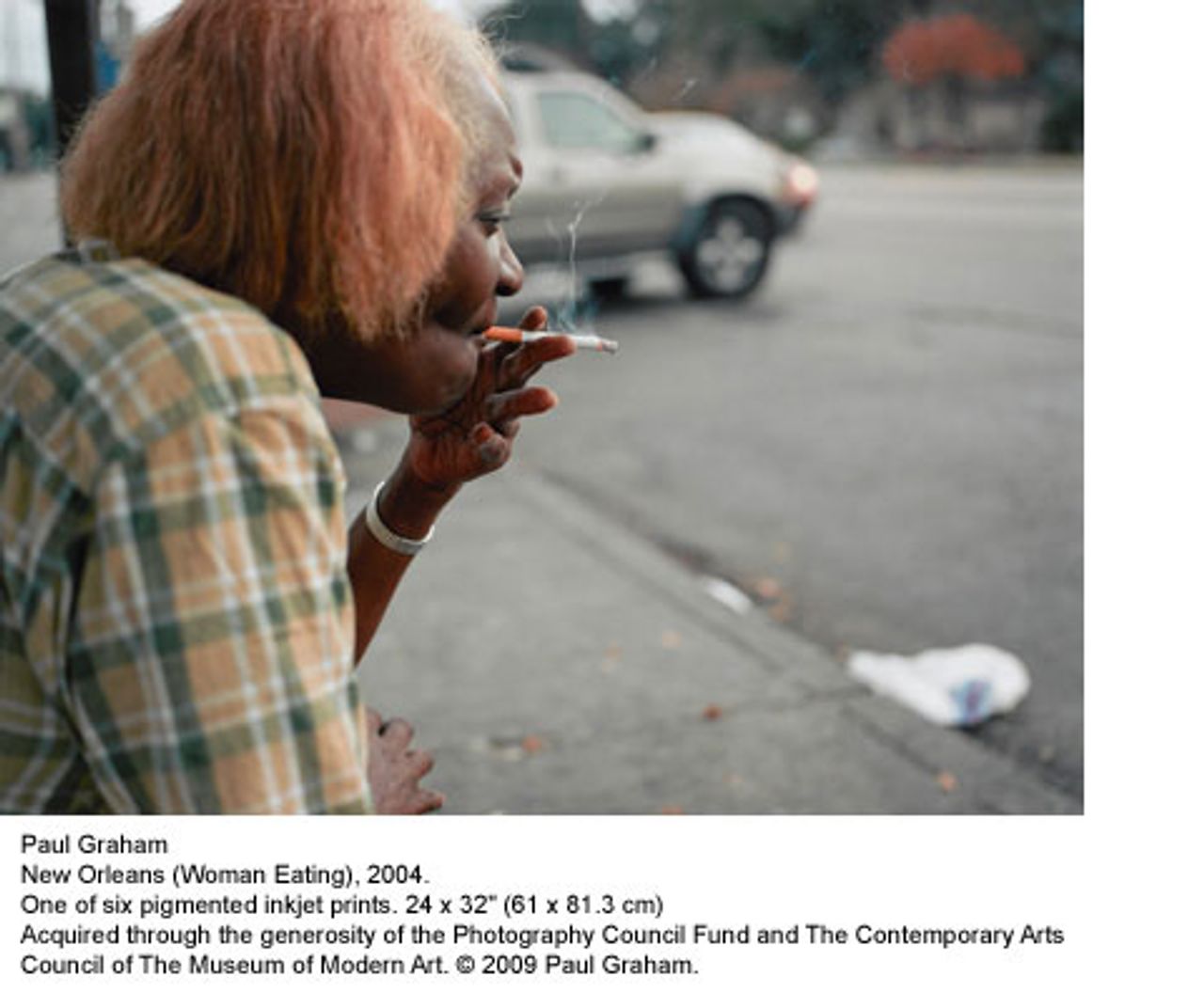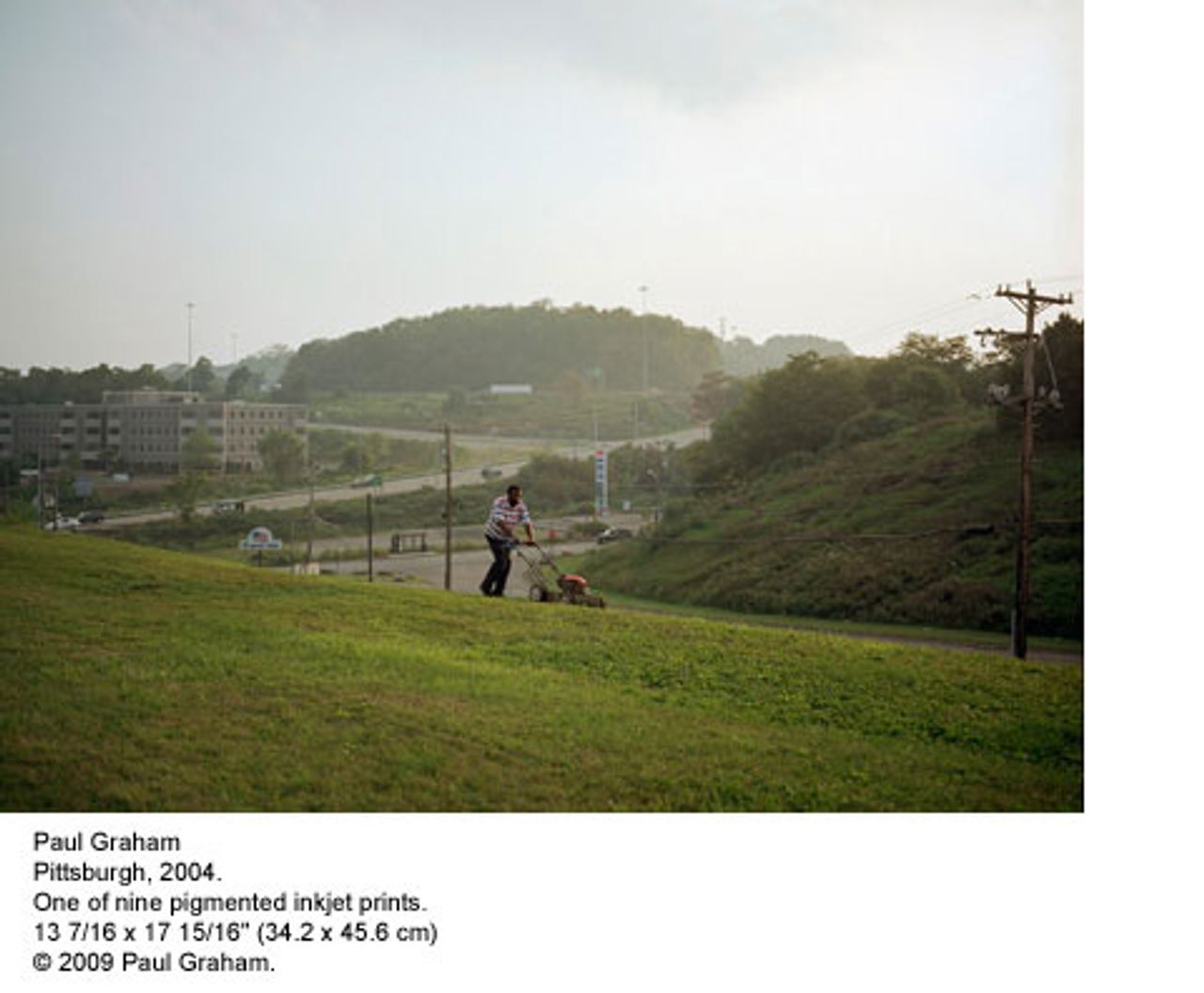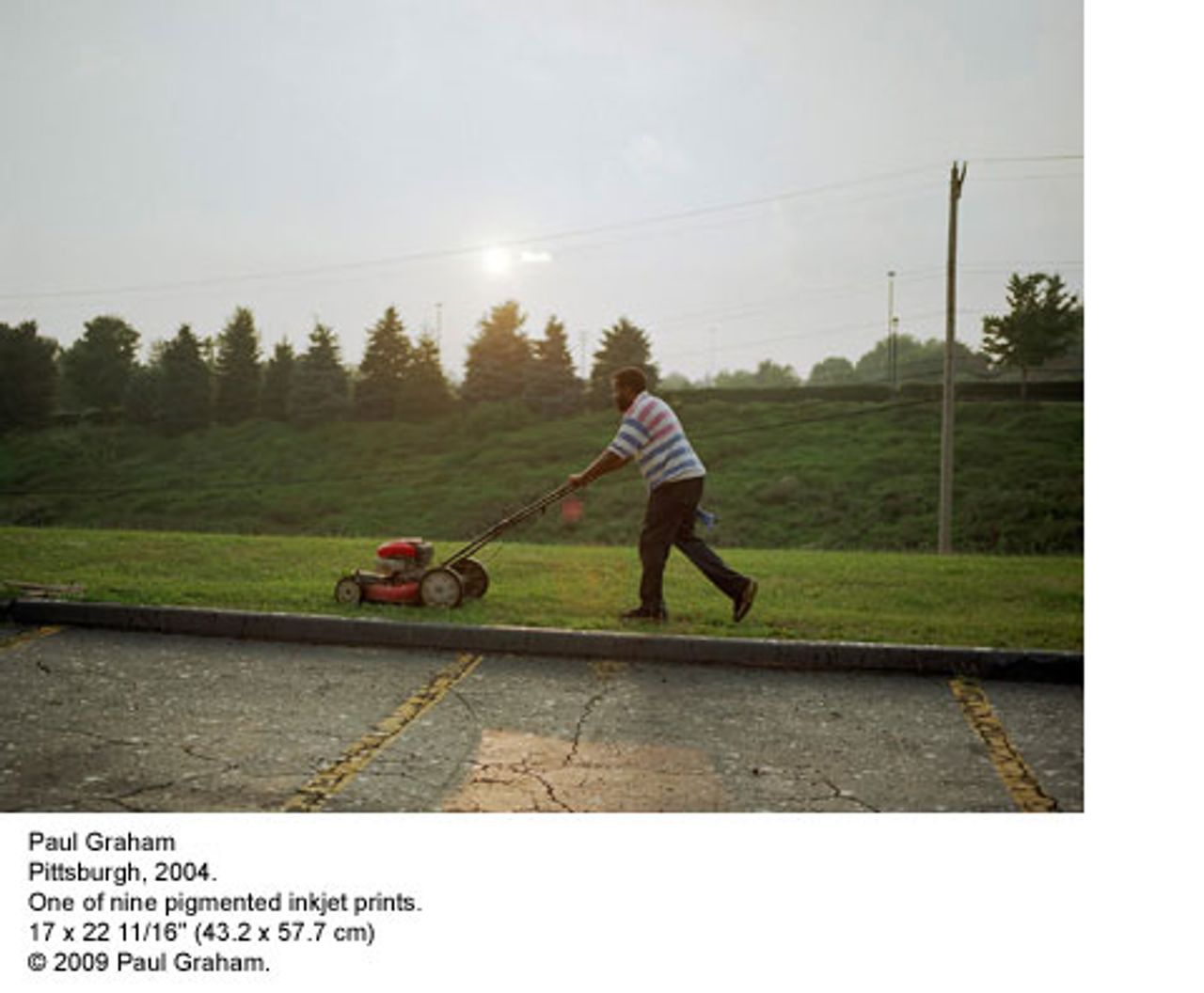The following article was submitted to the WSWS by a guest contributor.
Virginia Smith is a designer, design historian and Professor Emerita of Art at City University of New York. She is a member of AICA (International Association of Art Critics) and publishes art criticism as well as books, recently: Forms in Modernism: The Unity of the Design Arts, Watson-Guptill, 2005, available at amazon.com.
A question provoking observers of contemporary visual art is this: What will come after Post Modernism? Accepting a linear progression of art historical movements, critics and historians place a work of visual art within the style dominating its moment of arrival. What makes the next movement in the continuum important, even shattering, for us now, is that we have lived during the decades of a great historical moment called Modernism, we’ve watched it flourish and spread, seen it die, and observed a new phenomenon of reaction arise, called Post Modernism.
Now, as the once firm ground beneath our feet destabilizes, we’re rocked looking at the remains of aggressive and boastful Post Mod behemoths, like the wreckage of the ideas they incarnated. And we have to wonder: what turn will the energy expressed through artists take us next? From photographers like Paul Graham we see “a shimmer of possibility” that our time might be most faithfully expressed through a new photography.
 The exhibit at the Museum of Modern Art
The exhibit at the Museum of Modern ArtGraham’s exhibition of photographs at the Museum of Modern Art (MoMA) in New York [a shimmer of possibility: Photographs by Paul Graham, February 4, 2009-May 18, 2009] is one of several recent exhibits supporting this supposition. The Whitney Museum exhibited William Eggleston’s work this winter and for the last three years, Eggleston has photographed the city of Paris as part of a commission for the Fondation Cartier, Paris; this marks his second solo show at the Fondation.
Here in New York there has been the Guggenheim Museum dedication of two floors to Catherine Opie’s work: one floor for the breathtaking beauty of her Icehouses and Surfers color photos, another floor for her documentation of sado-masochistic lesbian and gay life. The Metropolitan Museum remembered and revived the mid-century photos of Walker Evans, labeling him ‘the progenitor of the documentary tradition in American photography”; the Museum of the City of New York looked to the economic crisis of the 1970s that destroyed the stately buildings of the Bronx (30 “insurance fires” per day) with Ray Mortenson’s series of photographs titled “Broken Glass.”
Strengthening this argument, the major museums have been joined by galleries. Peter Bialobrzeski’s work (at Laurence Miller, 57th Street), in the show “Lost in Transition,” shows tall buildings transposed into wavy white specters, making architecture insubstantial (“All that is solid melts into air”); Emmet Gowin documented his sharecropper family and friends for 30 years in Danville, Virginia, shown at Pace/McGill; more Paul Graham, at Greenberg Van Doren Gallery.
Legitimized by these authorities, photography surfaces as a means to see and understand the phenomena of our historical moment. And there are arguments for this particular moment: 30 years is a good span, enough distance to be cooled off, and yet close enough to remember the headlines. It has been 30 years since Susan Meiselas documented the 1979 Sandinista revolt in Nicaragua, shown this winter in a powerful exhibit at the International Center of Photography. Jimmy Carter’s presidential election campaign was the subject of William Eggleston’s coverage, mostly through pictures of old Southern churches and houses, at the Whitney; Gowin’s family photos start in the 1960s. Has time speeded up, like space? Is 30 the new 80? Has something emerged that is of and for our time?
It was in architecture that leading theories of Modernism became evident and through which they spread. “Architecture dominated the discourse of Modernism,” as art historian Hal Foster wrote (and who would disagree) in Design and Crime, Verso 2003, and thereafter it dominated through Post Modernism. Perversely, the classic Modernism of Le Corbusier, Walter Gropius, J.J.P. Oud and Gerrit Rietveld, became the “International Style,” a different and grander statement, without the social consciousness central to the early Moderns.
Corporations appropriated this style in their heyday. IBM took the corner of Madison Avenue and 57th Street in Manhattan for a massive black tower; ATT occupied the adjoining block, erecting a granite tower with its ‘Chippendale’ top; CBS lured Eero Saarinen to design its famous black and beautiful headquarters on 52nd Street and 6th Avenue; in 1968 General Motors destroyed the Savoy Plaza Hotel at 5th Avenue and 59th Street for a white marble tower with an automobile showroom on the ground floor.
Now these brand skyscrapers of the 1960s, ’70s, and ’80s no longer house their original owners. They have been sold to others for investment or rental. Most curiously, IBM’s massive corporate giant is now 50 percent owned by the Ohio State Teachers Retirement System. The Chrysler Building, commissioned by Walter P. Chrysler to be the tallest building in the world in 1931, is now managed as a rental by Tishman, hubcaps on its façade the only remnant of the automobile company bankrupt this year.
Philip Johnson, avatar of both Modernism and Post Modernism, designed the ATT headquarters on Madison which now houses the Sony Corporation of America, its soaring ground floor space a public area for snacks and the Sony Wonder Technology Lab. Most of the iconic buildings of Post Modernism are predominantly office rentals, the original proprietors hanging on in two floors (Legal or Sales) like ruined landowners in a guesthouse on their former estate. To add to the worries and ironies of failed corporate powers, the commercial vacancy rate continues to mount, business newspapers predicting 17.6 percent for 2009, up from 12 percent in 2008, and 10 percent at the end of 2007.
Looking back, the grandeur and grandiosity of Modernism was staggering. Most notably, Corbusier’s “Plan Voisin” for Paris in 1925 proposed towers in formal parks to replace a leveled city. Successive generations of architects and city planners thought big, contemplating model villages, airplanes landing on skyscrapers, grand arteries and sweeping highway cuts through poor neighborhoods.
The current economic downturn makes such ambitious architectural plans impossible. Bureaucratic paperwork and political conflicts cause some projects to end up in the Dreamland exhibit at MoMA as scale models. ‘Abandoned,’ ‘delayed indefinitely’ ‘on hold’ are phrases used when mentioning projects such as the World Trade Center project, still a construction site after eight years of wrangling between city, state, owner, and architects. The large financial backing for most architectural projects is an obstacle. But money is not crucial to the photography we see now.
Paul Graham‘s photos, in his series of moderate size prints, do not all have titles, but they could. The first one, labeled “Texas 2005,” I would call “Game Over.” First, a blazing sun sets over a lake at the end of a road; it is getting dark, the houses at either side of the road are in gloom, the cars are ghostly white, all is somber, subdued, unlit; 2/ the sun sinks lower; 3/ lower; 4/ a black man and his daughter throw a basketball at a hoop, the house in gloom behind them appears pale yellow, their white T-shirts the lightest part of the image; 5/ the man leaps up to dunk the ball in basket, grabs the ring, girl strains to see it—she arches up, leaping, into the game; a few touches of last light visible behind dark trees; 6/ girl is alone with basketball, he’s gone in to supper, two orange streetlights glow at the far end of the road; 7/ she plays alone; 8/ she walks away—game over. It was a brief moment while the light lasted.

 “New Orleans 2004 (Woman Eating)” (his title): 1/ profile of a neatly dressed black woman, with orange hair, on a sidewalk; 2/ she eats from take-out box on knees (looks like chicken parmigiana) 3/ close up of the box; 4/ and 5/ the sidewalk, butts and crushed soda can, scraps of chicken bones; 6/ final frame: she drags on a filter-tip cigarette. (It’s good to see someone smoking in this over-legislated age of Mayor Bloomberg). A person acts, that’s all the story is, make of her what you will, unforgettable.
“New Orleans 2004 (Woman Eating)” (his title): 1/ profile of a neatly dressed black woman, with orange hair, on a sidewalk; 2/ she eats from take-out box on knees (looks like chicken parmigiana) 3/ close up of the box; 4/ and 5/ the sidewalk, butts and crushed soda can, scraps of chicken bones; 6/ final frame: she drags on a filter-tip cigarette. (It’s good to see someone smoking in this over-legislated age of Mayor Bloomberg). A person acts, that’s all the story is, make of her what you will, unforgettable.

 “Pittsburgh 2004,” I would call “Labor”: A series of 9 photos. A black man is mowing grass at edge of road. 1/ he mows to right; 2/ he mows to left; 3/ to right again and wipes face, it is hot; 4/ to left; 5/ he turns again to right; 6/ he seems to stop a moment to rest, you notice his flag-striped shirt; 7/ back to the left; 8/ a shot of a brown GMC Safari, probably his, no one else is around; 9/ mows once more to the left. He is not leaving yet, still mowing. Again, as with “Game Over,” it is the end of day, darkening; he keeps going until the job is done.
“Pittsburgh 2004,” I would call “Labor”: A series of 9 photos. A black man is mowing grass at edge of road. 1/ he mows to right; 2/ he mows to left; 3/ to right again and wipes face, it is hot; 4/ to left; 5/ he turns again to right; 6/ he seems to stop a moment to rest, you notice his flag-striped shirt; 7/ back to the left; 8/ a shot of a brown GMC Safari, probably his, no one else is around; 9/ mows once more to the left. He is not leaving yet, still mowing. Again, as with “Game Over,” it is the end of day, darkening; he keeps going until the job is done.
“New Orleans 2005 (Kings Meat),” I would call “Waste”: A series of five photos, this series in bright color of daylight. First, a view from a vantage point across a highway from a market, “King’s Meat” the sign reads; 2/ a woman prepares to cross; 3/ she crosses; 4/ she is gone, cars continue; 5/ The last and larger print: two slim black adolescent girls, leaning against post on the same sidewalk, “Kings Meat” sign across the street, cars parked, passing, turning; six people in frame, no one looks at each other, the girls are silent, waiting together on a cracked and spotted sidewalk. They are friends. Beautiful in their thin clean jeans and small tidy heads, their faces without expression. No symbolism, just a random assortment of passersby on a corner across the street from a market. The future, I thought, they know there is none.
What is the meaning of this photography for us now? Beauty, humanity, the encounter with another person, an unplanned moment between you, the viewer, and the people in the picture. Most of all, the smallness, the small scale. Close up, unpretentious, unobserved; you unexpectedly come across a few Americans, their rooms, their streets, their family members, their trees, their cars, casually. As Graham says, “enter and see.” No grand plan; just a bus ticket and a handheld camera; no need to contact “someone in charge,” no executive or official, no permission. No bureaucratic approval, no flak from the people being photographed. What strikes you is the easy cooperation, the continuation of life in these unposed images. Graham’s people never notice the photographer, Gowin’s wife and family cooperate with him, no problem, Mortenson seems to have walked into every abandoned house in the Bronx with no problem from authorities.
Yet, grand plans continue, and architects are sought to solve social problems. French President Nicholas Sarkozy invited architects to submit proposals for a “Grand Paris.” This Paris would eliminate unrest in the outlying troubled, or ‘sensitive’ areas. Ten architectural firms have submitted proposals. The favorite, Christian de Portzamparc, wants to demolish the Gare de l’Est and the Gare du Nord, two major train terminals and historical treasures, to build an elevated runway all around Paris, with a grand Metro hub outside it, so there will be a direct route from ‘troubled’ suburbs to central Paris.
Photography returns us to living on a human scale. The sheer size, the grandeur of towers were meant to overwhelm, to appear invincible, immortal, as size and scale have always done, from the pyramids to Mussolini. With spires, grand arches, massive cantilevers, or symbolic numbers, they reached to the skies, as architect Alfred Bossom proposed (Building to the Skies: The Romance of the Skyscraper, 1934).
Now the ideal of infinite height and power and limitless achievement has been knocked cold. Fortunately, the photograph is around so we can once again see at ground level. Through it we can still look at another human being with our own eyes, see our own importance and limitations, our own beauty and our own ugliness. The downside is the aloneness, the emptiness, of the large American land. We can see its endless roads and its decaying houses. We see the thrown-together lives, the chance arrangements, the haphazard encounters, and also, the struggle against disorder and chaos in the fanatic cleanliness of starched and scrubbed poor people. But at least we are seeing them; we are not dazzled anymore.
